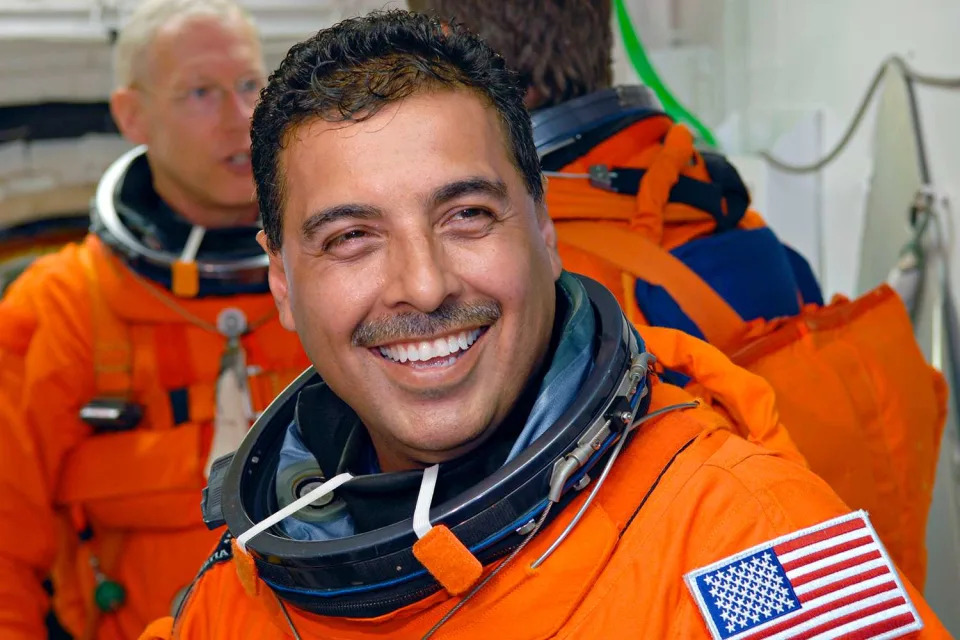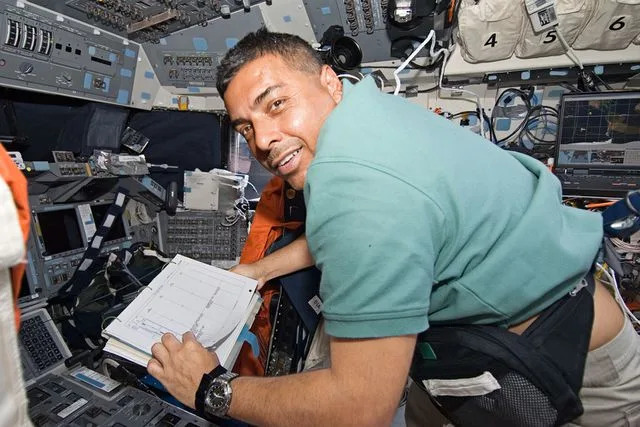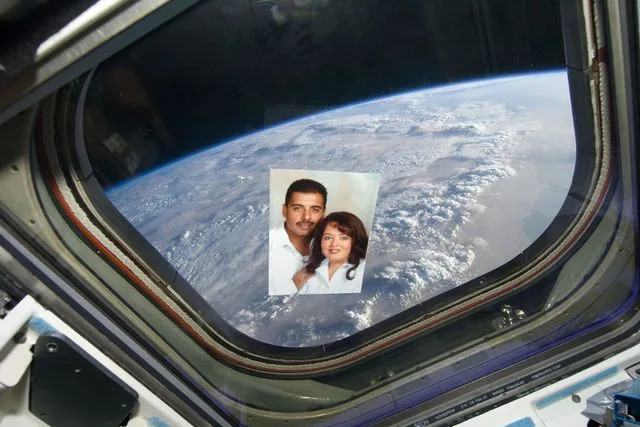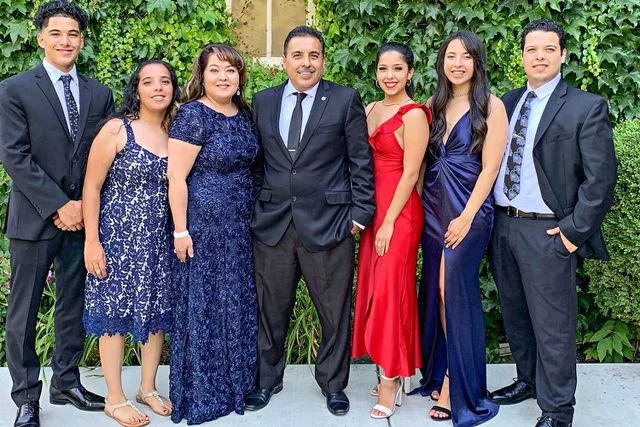Jack Smart
PEOPLE
Thu, September 14, 2023
Thu, September 14, 2023
The former NASA flight engineer tells PEOPLE what it’s like to orbit Earth’s atmosphere 219 times in this week's issue

Jim Grossmann/NASANASA astronaut José Hernández
Thirty-seven years passed between José Hernández watching the Apollo 17 moon launch on a rickety TV set and becoming the first migrant farm worker to leave Earth’s atmosphere himself.
“Imagine a 10-year-old kid living in one of the worst parts of Stockton, California, watching an old vacuum-tube-technology console TV with the rabbit-ear antenna and grandma's mandatory knitting on the bottom,” the retired astronaut, now 61, tells PEOPLE in this week's issue.
“There’s me kneeling by that black-and-white TV. And there's Gene Cernan, walking on the moon,” he recalls of that pivotal “cold December evening” in 1972. “I said, ‘That's what I want to be.’”
Now, thanks to a new movie starring Michael Peña as Hernández, we don’t have to imagine such a moment. It’s one of many that make A Million Miles Away — which is in theaters and streaming on Amazon Prime Video Sept. 15 — such an awe-inspiring biopic. The film is based on the true story of Hernández’s ascent from itinerant farmhand born in California to Mexican immigrants all the way to NASA flight engineer on the 2009 Space Shuttle mission STS-128.
Related: Nicole Aunapu Mann Becomes First Native American Woman in Space: I Hope It 'Will Inspire'
Via video call, seated in front of the boldly blue uniform he wore training for that mission — “the Smurf suit,” as one of his daughters once called the outfit — Hernández reveals to PEOPLE the “recipe to succeed” that his father, Salvador, gave him in 1972.
“He did two important things that evening: he empowered me to believe I can do it… and he sat me down and he made me justify why," he says.
Hernández adds that his father’s five ingredients for success—“determine your goal, recognize how far you are from it, draw yourself a roadmap, prepare yourself for the challenge, and work, work, work”—were what propelled him to learn English by age 12, develop digital mammography imaging at Lawrence Livermore National Laboratory, study electrical engineering at the University of the Pacific and University of California, Santa Barbara, and begin astronaut training at NASA’s Johnson Space Center in Houston, Texas in 2001.

NASASTS-128 mission specialist José Hernández, on the flight deck of Space Shuttle Discovery
For more on Hernández, pick up the latest issue of PEOPLE, on newsstands Friday, or subscribe here.
Because he was rejected a whopping 11 times by the NASA space program before finally being accepted on the 12th try, Hernández has since added his own sixth ingredient to the recipe: “I tell folks, you gotta have that perseverance gene in you to keep trying and believing in yourself, and keep improving yourself each time you fail.”
What was the space launch for STS-128 like? “You go from zero to 17,500 miles an hour in eight and a half minutes,” explains Hernández. “I mean, this is the best Disneyland ride you can ever hope for.”
Being in outer space, he adds, is “very, very humbling.”

courtesy José HernándezA photo of José Hernández and wife Adela aboard the Space Shuttle Discovery
“I remember the very first time I unbuckled my seatbelt and experienced zero-G for the first time... I was making my best Superman impersonation as I floated down to the mid-deck. But then I saw the window that was pointed directly at Earth, and I said, ‘I gotta stop and look at Earth from this perspective. Only 500-and-some-odd people have had the privilege to see it, of seven billion.’”
He continues, “We were over North America. But what struck me as beautiful is that you couldn't tell where Canada ended and the U.S. began. You couldn't tell where the U.S. ended and Mexico began. And I said, ‘My gosh, I had to go out of this world to realize that borders are human-made concepts designed to separate us.’ If we can give the opportunity to our world leaders to have this same ‘aha’ moment, I will guarantee you we wouldn't be having the troubles we have.”
These days, Hernández splits time between his California vineyard Tierra Luna Cellars — a “full-circle moment,” he says, after growing up harvesting grapes and other fruits across California and Mexico — and public and motivational speaking. He is the author of Reaching for the Stars: The Inspiring Story of a Migrant Farmworker Turned Astronaut.

courtesy José Hernández(Left to right:) Antonio Hernández, Marisol Hernández, Adela Hernández, José Hernández, Karina Hernández, Vanessa Hernández and Julio Hernández
Leaving NASA, he reveals, had a lot to do with “dedicating more time” to the five children he and wife Adela, 55, share: Julio, 29, Karina, 28, Vanessa, 26, Marisol, 24, and Antonio, 20. “I wanted to make sure I kept my kids on the straight and narrow, that they go to college.”
After attending Julio’s recent Purdue University graduation, at which he earned a PhD in Aeronautical and Astronautics Engineering, Hernández says, “I think I made the right decision.”
People.
No comments:
Post a Comment